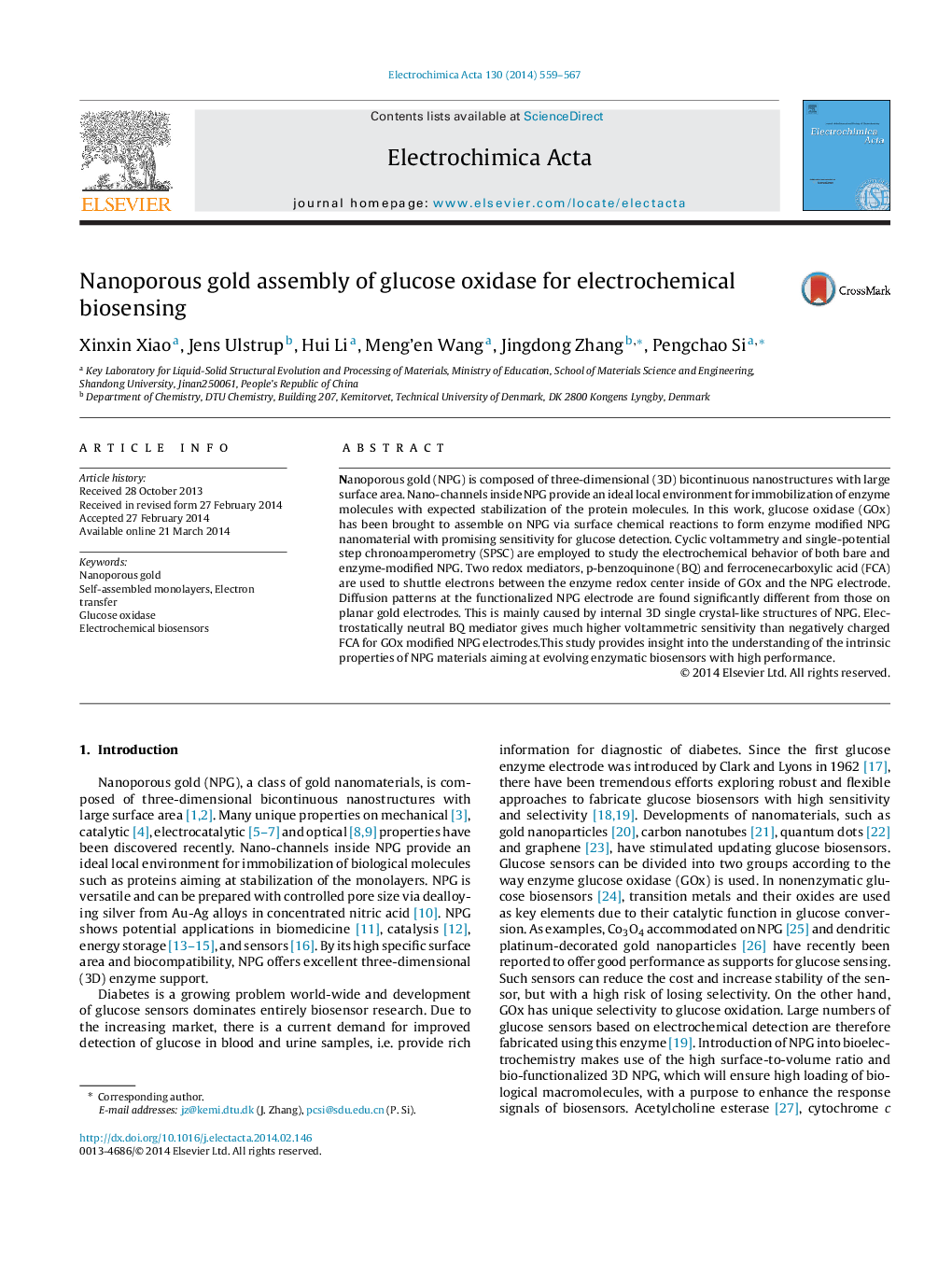| Article ID | Journal | Published Year | Pages | File Type |
|---|---|---|---|---|
| 185891 | Electrochimica Acta | 2014 | 9 Pages |
Nanoporous gold (NPG) is composed of three-dimensional (3D) bicontinuous nanostructures with large surface area. Nano-channels inside NPG provide an ideal local environment for immobilization of enzyme molecules with expected stabilization of the protein molecules. In this work, glucose oxidase (GOx) has been brought to assemble on NPG via surface chemical reactions to form enzyme modified NPG nanomaterial with promising sensitivity for glucose detection. Cyclic voltammetry and single-potential step chronoamperometry (SPSC) are employed to study the electrochemical behavior of both bare and enzyme-modified NPG. Two redox mediators, p-benzoquinone (BQ) and ferrocenecarboxylic acid (FCA) are used to shuttle electrons between the enzyme redox center inside of GOx and the NPG electrode. Diffusion patterns at the functionalized NPG electrode are found significantly different from those on planar gold electrodes. This is mainly caused by internal 3D single crystal-like structures of NPG. Electrostatically neutral BQ mediator gives much higher voltammetric sensitivity than negatively charged FCA for GOx modified NPG electrodes.This study provides insight into the understanding of the intrinsic properties of NPG materials aiming at evolving enzymatic biosensors with high performance.
